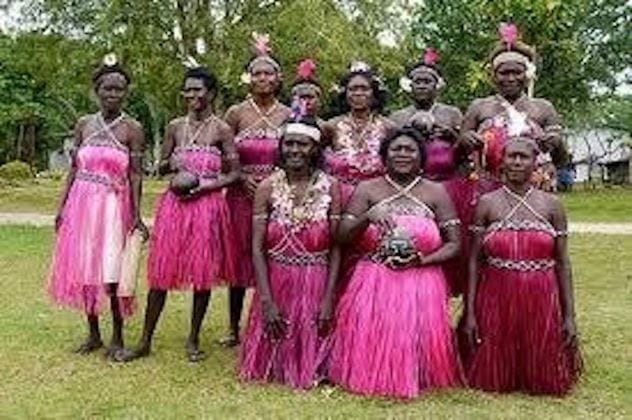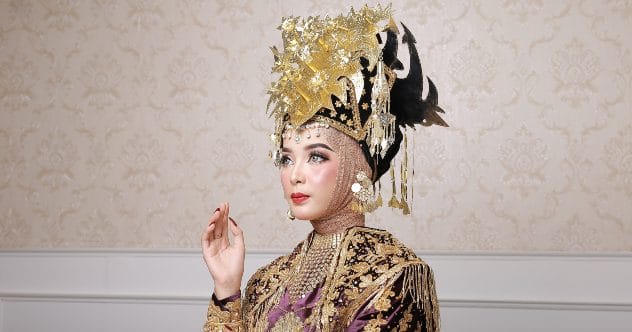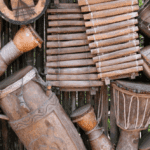Many animal species exhibit matriarchal societies, such as African elephants that live in herds led by females. The matriarch leads with skills that sense danger, working as a unit to raise their young. Other animal matriarachies include bonobos, lemurs, meerkats, and ants.
Like the elephants, some human societies are run by women who demonstrate fierce loyalty and intelligence. Here are 10 such societies.
Minangkabau
Located on the eastern islands above Australia, Minangkabau is the largest matriarchal society with over four million people who respect and favor women. The family name and properties are inherited through the women. Grooms move into the bride’s house upon marriage, and men and women contribute equally.
At age 10, boys leave their mother’s home to stay in men’s quarters to learn practical skills and religious teachings. Men hold religious and political offices with the permission of women. While the clan chieftain is always male, women help select them and remove them from office if needed.
Bribri
The Bribri tribe, located off the coast of South America, is a self-sufficient indigenous group that grows its own food, medicine, and construction goods. Society is divided into clans determined by the mother’s lineage. Men don’t raise their own children, only their sister’s children.
Only women can inherit the land, making food production more sustainable. Agroforestry encourages foraging and picking of foods from natural sources, a source of pride and leadership shared among women. Women prepare drinks for sacred religious rituals or momentous life events.
Khasi
One of the last remaining matriarchal societies in India, Khasi children receive their mother’s surname. Women work and sell goods, while men stay home and raise children. After marriage, the groom moves into the bride’s parents’ home and takes her surname. The youngest female receives the largest inheritance and family home, responsible for caring for aging parents. Men receive a small inheritance, but women get the larger share.
Women are predominantly in power, and many Khasis practice Christianity, integrating men as the family patriarch, like what is seen in Western culture.
Mosuo
The Mosuo people are a small community in southern China where the house matriarch makes the final decisions. Lineage is traced through the women of the family, and children belong to their mother’s family, living with blood relatives in a multigenerational home.
Mosuo people practice walking marriages where couples don’t live together but enjoy each other’s company. Women can entertain other men if all parties are interested. There is no such thing as an illegitimate child since lineage is through the mother. Children always remain in the mother’s care, with the father playing a minor role in their upbringing.
The land passes through the maternal side of the family, and the oldest daughter becomes the next matriarch.
Nagovisi

The Nagovisi people live on a tropical island near Indonesia and Australia. Food production is the focus, with women playing the leading role. Every adult woman can farm on her ancestor’s land, passing this right to her daughter. Husbands and men perform manual labor, and if a man assists a woman’s land, they’re considered married.
Akan
Along the Gulf of Guinea, the Akan people are another matrilineal society run by women. The culture is based on maternal ancestry, assigning positions within the financial and political world through the mother’s lineage.
Men play an important role in their sister’s children’s lives but not their own. Leadership positions are inherited through mothers, sisters, and daughters. Men support their female relatives, while women can associate with all group members.
Umoja Usao
Founded in 1990, Umoja Usao is an all-female village created as a refuge for women in abusive relationships or running from forced marriages. Women from the Samburu tribe, where they were treated as their husband’s property, escaped to Umoja. The village became a haven for runaway and homeless women.
Umoja means “unity” in Swahili, and the Umoja people educate others about their rights. They host a primary school, create jewelry, and entertain tourists to support their village financially. Men are banned from living in the village but are permitted to visit.
Meghalaya
The Garo tribe in the hills of India pass property and political succession from mother to daughter. The youngest daughter typically inherits her mother’s property.
Society is matrilineal but not matriarchal, meaning men govern society and manage the property. Garo believes in gender equality, so properties are owned by women but governed by men. Marriages are often arranged, and the husband moves into the wife’s house, but the union can be dissolved without stigma.
Nubian
The Nubian people are deeply connected to the Nile River and cultivated land along its banks for hundreds of years. After the creation of dams in the 20th century, Nubians lost their homes and moved to find work. While men left home, women stayed, raising children and caring for the elderly.
The Nubian culture is rich in art, storytelling, music, and Egyptian royalty. Their culture still follows a matrilineal society dominated by fierce women.
Hopi
Some Native American tribes, like the Hopi people in Arizona, follow a matrilineal pattern. They trace lineage through the mother’s side. After a child’s birth, the paternal side names the child, but only the paternal women can submit names. Women tend to the home and children, while men handle agriculture and war.
These societies demonstrate the diverse ways in which women lead and contribute to their communities, challenging traditional gender roles and offering unique perspectives on social structures. Each culture has its own distinct traditions, but all highlight the strength, resilience, and influence of women.
Which of these societies fascinated you the most? Leave your comment below!










